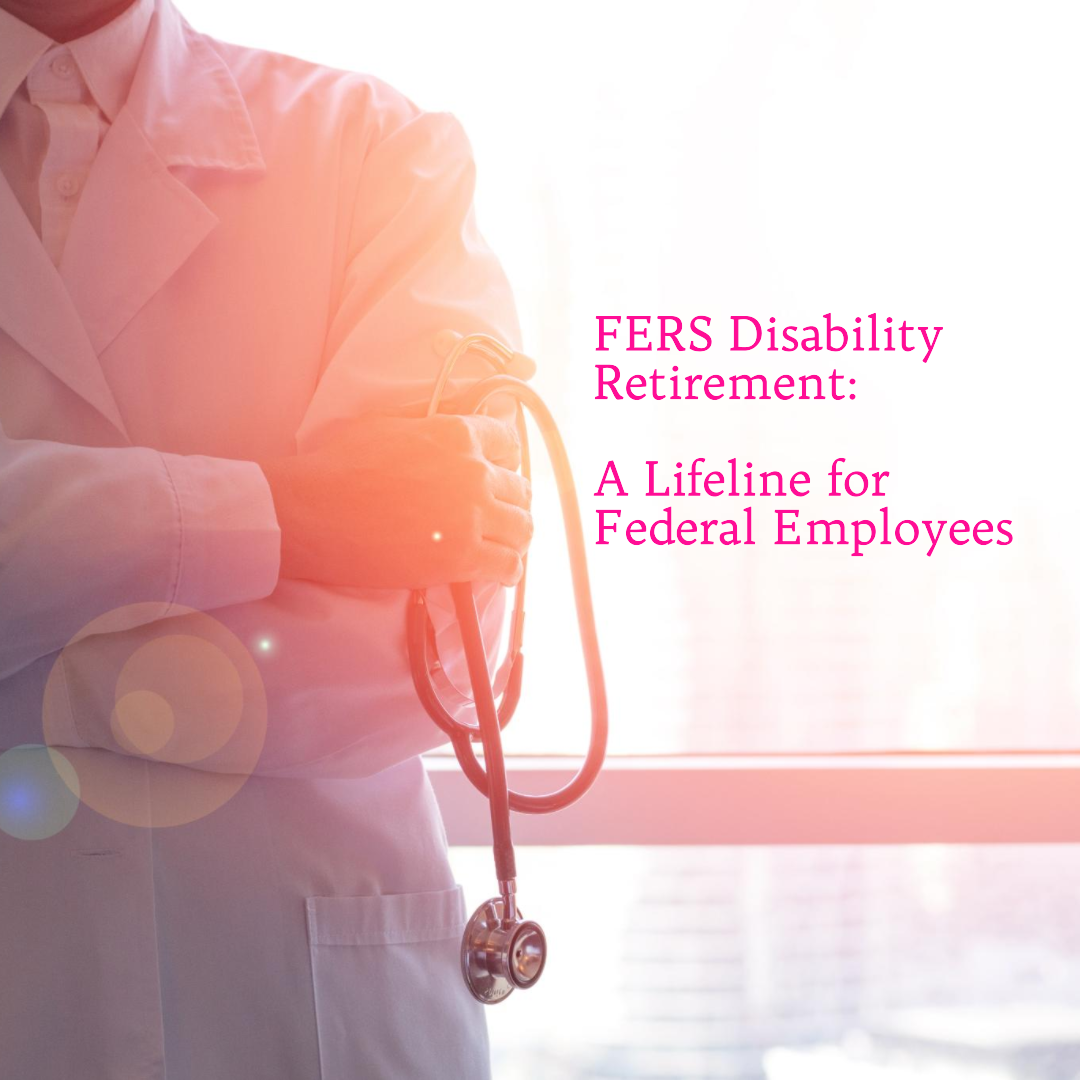Federal employees have access to a comprehensive retirement system known as the Federal Employees Retirement System (FERS). Within this system, there exists a valuable benefit called FERS Disability Retirement, designed to provide financial assistance to federal workers who become disabled and are no longer able to perform their jobs. In this article, we’ll break down the basics of FERS Disability Retirement.
What is FERS Disability Retirement?
FERS Disability Retirement is a retirement benefit available to eligible federal employees who suffer from a disabling medical condition that prevents them from continuing their federal career. This program ensures that federal workers are taken care of until they recover or until they turn age 62.
Who Is Eligible?
To be eligible for FERS Disability Retirement, you must meet specific criteria:
- Federal Service: You must have completed at least 18 months of creditable federal civilian service under FERS.
- Medical Condition: You must have a medical condition that is expected to last for at least one year and prevents you from performing the essential duties of your current position or any reasonable alternative positions.
- Agency Accommodations: Your agency must certify that they are unable to accommodate your condition.
- Application Timeline: You must apply for FERS Disability Retirement while you are still employed with the federal government or within one year of your separation due to the disability.
Social Security Disability Insurance (SSDI)
To apply for FERS Disability Retirement, you are required to file for Social Security Disability Insurance (SSDI). You do not have to qualify for SSDI to be eligible for FERS Disability Retirement. However, if you do receive SSDI benefits, it will reduce your FERS Disability Retirement Amount. For an overview on Social Security considerations, see our Social Security for Federal Employees resource.
How much will I receive in FERS disability retirement benefits?
Your disability annuity will be based on your high-3 average salary. Your high-3 average salary is the average of your highest 36 months of consecutive earnings. Both base pay and locality pay are included in the high-3.
You will receive 60% of your high-3 average salary minus 100% of any SSDI benefits in the first 12 months. After the first 12 months, the FERS Disability benefit is reduced to 40% of your high-3 average salary minus 60% of your SSDI amount. Let’s review a few examples.
First, let’s assume that a worker is age 60, has a high-3 of $75,000, and has 19 years of service time.
If the worker did not receive any SSDI benefit, the projected FERS Disability Benefit would be:
| First 12 Months of Disability | 60% of High-3 | $45,000 Annual Benefit | or $3750/Month | ||
| After 12 Months | 40% of High-3 | $30,000 Annual Benefit | or $2500/Month | ||
If the worker qualified for $15,000 in SSDI benefits, the projected benefits would be:
| First12 Months of Disability | 60%of High-3 = $45,000 | Reducedby 100% of SSDI – $15,000 | AnnualBenefit $30,000 | or $2500/month | ||||
| After 12Months | 40% of High-3 = $30,000 | Reduced by 60% of SSDI -$9,000 | Annual Benefit $21,000 | or $1750/month | ||||
If you add the annual benefit amounts, you may have noticed that the FERS Disability Benefit was reduced in proportion by the SSDI Amount. OPM’s goal is to offset the FERS Disability by SSDI so a worker can’t obtain more than 60% in the first 12 months, 40% thereafter from the Federal Government.
What's the Application Process?
Here’s a simplified overview of the process:
Medical Evaluation: First, you should obtain a thorough medical evaluation from a licensed healthcare provider. The medical documentation plays a crucial role in determining your eligibility for FERS Disability Retirement.
Application Submission: Submit your application for FERS Disability Retirement through your federal agency’s human resources department or directly to the Office of Personnel Management (OPM). You will need the following forms.
- SF 3107, Application for Immediate Retirement, and
- SF 3112, Documentation In Support of Disability Retirement
- If you are under age 62, documentation that you have applied for social security disability benefits
OPM Review: OPM will review your application, including your medical records, and make a determination about your eligibility for the program. They will consider whether your condition prevents you from performing your job or any suitable alternative position. For additional guidance on what happens after you apply, see our FERS Retirement Quick Guide.
Reevaluation: Periodically, OPM may review your case to ensure you still meet the disability criteria. If your condition improves to the point where you can return to work, your disability benefits may be adjusted or terminated.
Important Considerations
After Age 62: OPM will recompute the payment amount at age 62, using normal FERS Retirement Calculation. The original high-3 will receive any COLA adjustments paid, and the total time on disability is added to service time. In our example above, The worker’s total service time will be 21 years (19 years of service before disability + 2 years on disability). He will also receive 1.1% per year since he has over 20 years of service at age 62.
COLA: You will not receive Cost of Living Adjustments (COLA) in the first 12 months. After 12 months, you will receive COLA.
Survivor Benefit: If you are married, survivor benefit and reduction is automatic. Your spouse will need to consent to any reductions.
Offset Rules: Besides Social Security Disability Insurance (SSDI), FERS Disability Retirement benefits may be subject to an offset if you are eligible for workers’ compensation benefits or have private disability insurance.
Taxes: Yes, in general, FERS disability retirement benefits are taxable. You will receive a Form 1099-R from OPM at the end of each year that shows the amount of your taxable annuity. You should always consult a tax advisor for guidance regarding your specific tax situation.
Appeals: If your application is denied, you have the right to appeal the decision within a specific timeframe. Seek legal advice or assistance if needed.
FERS Disability Retirement is a crucial safety net for federal employees who find themselves unable to work due to a medical disability. It provides financial support and peace of mind during challenging times. If you believe you meet the eligibility criteria, it’s essential to seek guidance from your agency’s HR department and consider consulting a financial advisor for federal employees to navigate the application process successfully.
Reach Out to Us!
If you have additional federal benefit questions, contact our team of CERTIFIED FINANCIAL PLANNER™ (CFP®), Chartered Federal Employee Benefits Consultants (ChFEBC℠), and Accredited Investment Fiduciaries (AIF®). At PlanWell, we focus on retirement planning for federal employees. Learn more about our process designed for the career federal employee.
Preparing for federal retirement? Check out our scheduled federal retirement workshops. Sign up for our no-cost federal retirement webinars. Make sure to plan ahead and reserve your seat for our FERS webinar, held every three weeks. Want to have PlanWell host a federal retirement seminar for your agency? Reach out, and we’ll collaborate with HR to arrange an on-site FERS seminar.
Want to fast-track your federal retirement plan? Skip the FERS webinar and start a one-on-one conversation with a ChFEBC today. You can schedule a one-on-one meeting by visiting our contact page.
Reference
https://www.opm.gov/retirement-center/fers-information/types-of-retirement/#url=Disability










